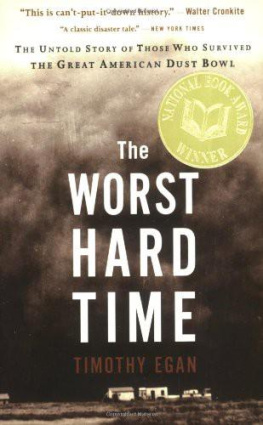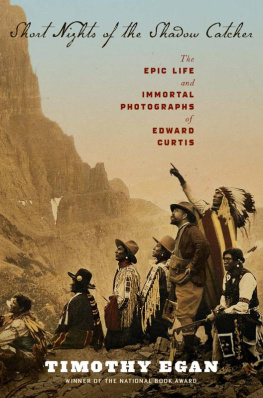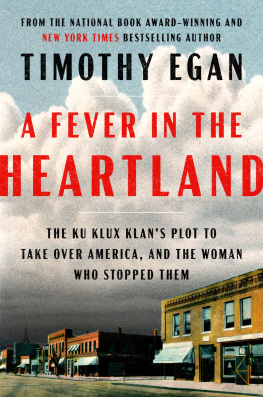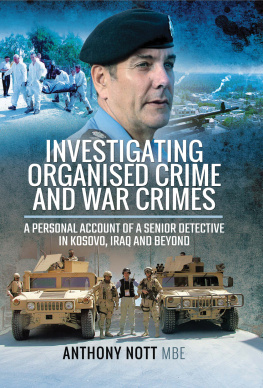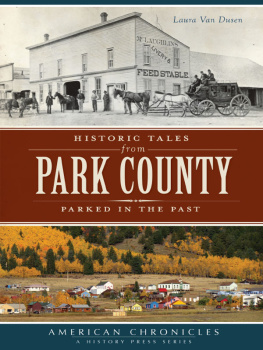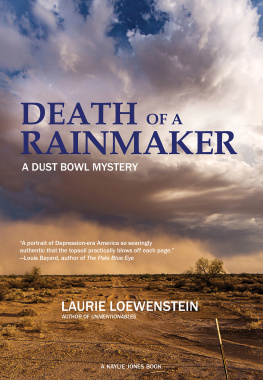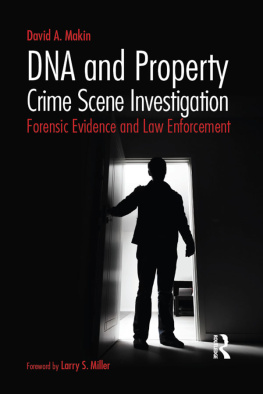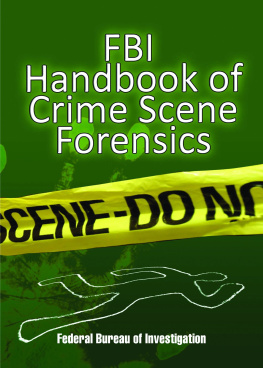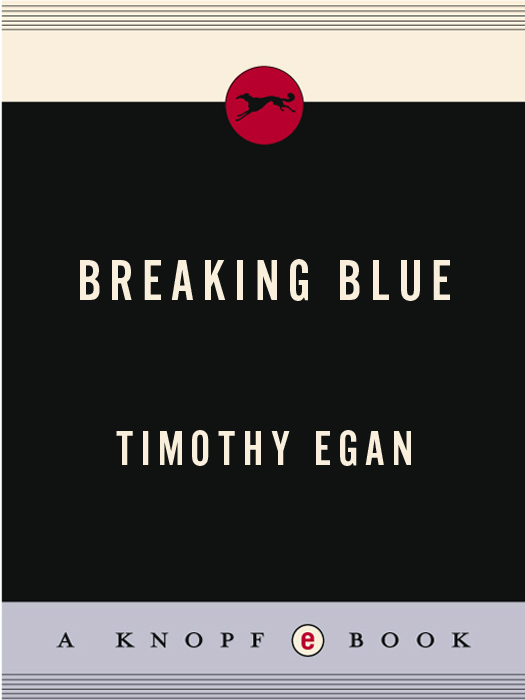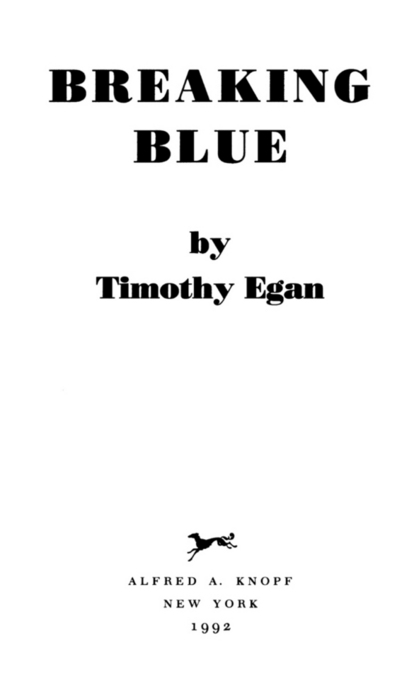ALSO BY TIMOTHY EGAN
The Good Rain
THIS IS A BORZOI BOOK
PUBLISHED BY ALFRED A. KNOPF, INC .
Copyright 1992 by Timothy Egan
All rights reserved under International and Pan-American Copyright Conventions. Published in the United States by Alfred A. Knopf, Inc., New York, and simultaneously in Canada by Random House of Canada Limited, Toronto. Distributed by Random House, Inc., New York.
LIBRARY OF CONGRESS
CATALOGING-IN-PUBLICATION DATA
Egan, Timothy.
Breaking blue / by Timothy Egan. 1st ed.
p. cm.
eISBN: 978-0-307-80040-4
1. MurderWashington (State)Pend Oreille CountyInvestigationCase studies. 2. Police murdersWashington (State)Pend Oreille CountyCase studies. 3. Police corruptionWashington (State)Pend Oreille CountyCase studies. 4. Bamonte, Tony. 5. Ralstin, Clyde. 6. Conniff, George, d. 1935. I. Title.
HV 6533. W 2 E 36 1992
364.15230979721dc20 91-27848
v3.1
To Joni, for the time
There aint no sin and there aint no virtue.
Theres just stuff people do.
JOHN STEINBECK , The Grapes of Wrath
The following story is true, based on public records, newspaper and archival material, and the recollections of people who lived through the summer of 1935 to tell about it in the last years of their lives.
Contents
ONE
THE LAST ACT OF LIFE
SEPTEMBER 1989
TWO
THE FIRST ACT OF DEATH
AUTUMN 1935
THREE
PSYCHIC DUEL
1989
EPILOGUE
MAY 1990
Acknowledgments
Prying this story from people who were around in 1935 was not nearly so hard as was tracking down the most basic of police documents from that era, most of which have disappeared. For help in the tracking, I am grateful to the staff at the Cheney Cowles Museum in Spokane, to the Newport Historical Society, and to Joan Egan. I owe much to Jon Landman in New York, who has the best eye for storytelling of anyone on West 43rd Street. Im grateful to Carol Mann, for insight and guidance. At Knopf, my thanks to Ash Green, Melvin Rosenthal, and Jenny McPhee.
ONE
THE LAST ACT
OF LIFE
SEPTEMBER 1989
1.
Judgment Day
W HEN IT CAME TIME for Bill Parsons to die, he crumpled into his wifes arms and started talking about the things cops seldom share with the women in their lives. She ran her fingers through his hair, this silver thatch, and felt the faintness of life: a tired and congested heart following a directionless beat, torn-up lungs gulping from the plastic tendrils of a metal appendage, a body in full retreat. Here it was, an Indian-summer morning in a valley cut by the Spokane River, and he couldnt take a breath of cool air. The wind blew down from the Selkirk Mountains, carrying a scent of the years final hay-cutting and apples pressed to cider; his oxygen came from the pharmacy, bottled.
The doctors could keep him from dying, but they could not make him feel alive. After thirty-five years of service to the city of Spokane, Washington, the former chief of police had a first-rate pension and medical plan, but it seemed to amount to nothing more than an open ticket to see more urologists and respiratory therapiststhe young men in running shoes waiting to stick something new up his ass or down his throat. Retirement was supposed to be about poker games in the light of a campfire, hip waders instead of tight shoes, chasing elk through huckleberry thickets, not about chrome trays and hospital gowns and a daily breakfast of color-coded horse pills. He seldom left the doctors office feeling any better, just more burdened with stuff. The bottled oxygen, the stimulants and slow-you-downsall this crapfor what? To sit in a trailer park, on the fringes of a city whose laws hed once enforced, waiting for Oprah to come on the tube?
From his office beneath the Gothic tower of police headquarters, he used to look away and imagine a salmon fly floating down the Spokane River below, taking the bend in slow motion untilthwap!a big brownie rose to snap the line. On the river that carried snowmelt from two states to the Columbia rode the retirement dreams of the former chief. In the inland Northwest, where the great coastal ranges blocked the rainstorms from the Pacific and the land was ripe with the kind of wildlife that most of America has lost, the outdoors was the only place for honest work and decent play. Ten minutes from the center of town, downstream from the raging falls, an old man could be Huck Finn again, lost in the eternal flow of the Spokane River.
Life was supposed to ebb away, like the river. But Parsonss body answered to its own schedule, throwing in a heart attack and emphysema, payback from earlier years. Physical pain he could tolerate; the toll on his good name was something else. Suspicion, half-truths, a vague and unfinished story about corruption and death from another erathat was not the sort of thing a person wanted to leave behind. The body would not go cold before the gossip would harden to gospel.
A ranchers son, born when followers of Chief Joseph of the Nez Perc still dreamed of driving homesteaders from the ponderosa pine forests and alfalfa fields of the inland Pacific Northwest, Edward W. Bill Parsons had seen the length of the twentieth century, only to have one incident, the worst mistake of his professional life, come back at him now. He started in police work at a time when bootleggers and Chinese numbers rackets could provide a patrolman with a healthy income on the side, and he got out just before crack dealers and the state lottery commission made a mockery of the Depressionera enforcement routine. When he retired, plotting a good life in the woods, serving on citizen boards and honorary panels, the chief thought he had escaped with his reputation intact. Baby-faced Bill Parsons, rookie cop in 1935, silver-topped dean in 1970, leader of the state police chiefs organization, past president of the Fraternal Order of Police. But where were his brothers now, when he needed them? The secret Parsons had carried with him his entire career was coming out: people were whispering; it was in the papers, on television. And it wasnt even his secret; yes, he was its custodian during his years on the force, but once he retired, he had passed it onor so he thought. The damn thing belonged to the Spokane Police Department, an institutional responsibility. Why, he wondered in these last days of his life, should he have to answer for it? It wasnt fair! Parsons had held up his end of the Blue Wall, keeping a silence that is the bond of his profession. Never, never, never had he spoken a word.
Confined by the limits of his collapsing body, Parsons longed for company, a few fellows who Knew What It Was Really Like. He used to go down to the Police Guild lounge for a snort and a memory blast. But, over time, most of the faces were unfamiliar, the common ground faded. Jerie asked some of the old boys from the station to visit her husbandJust give the chief an hour of your timebut few people came around to the trailer park on the fringe of town. It seemed obvious, though it took some time for him to believe it, that perhaps his popularity was entirely dependent on the uniform he had worn half his life. Now, he was so lonely it sometimes felt like physical pain, a powerful ache. In baggy clothes, no longer chief, Bill Parsons sat through his last year as a bored and pained bystander.


